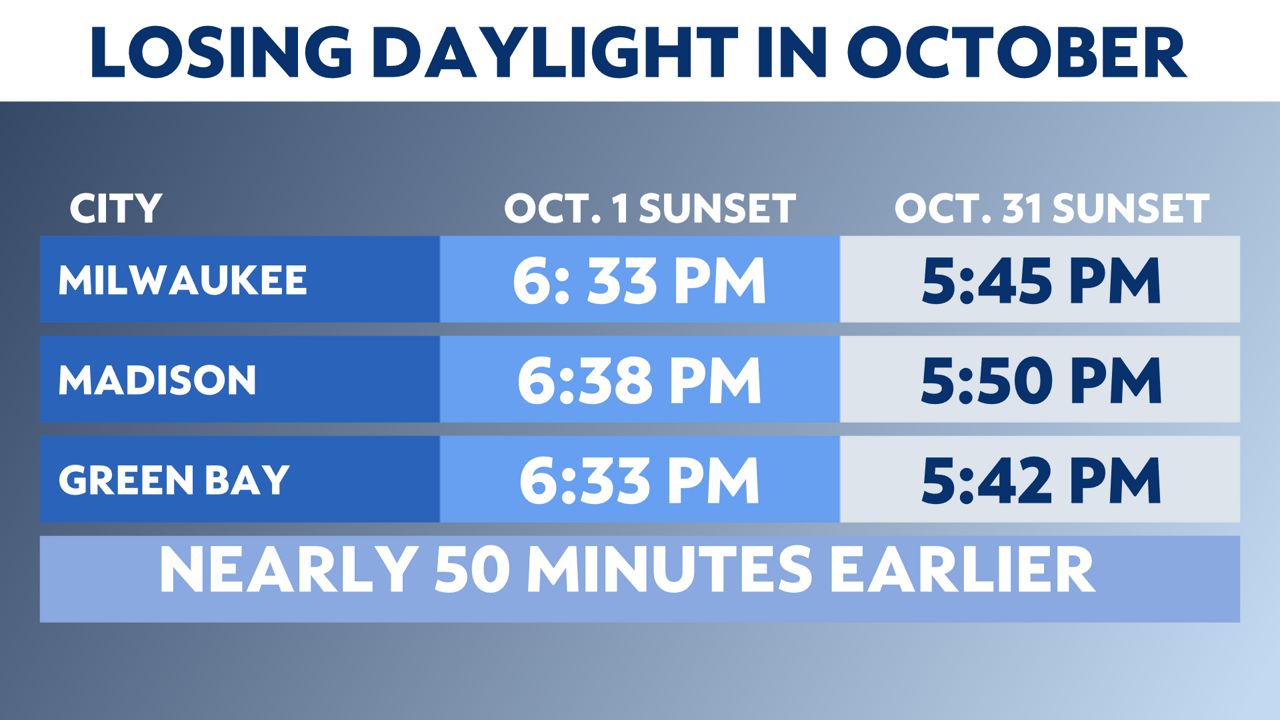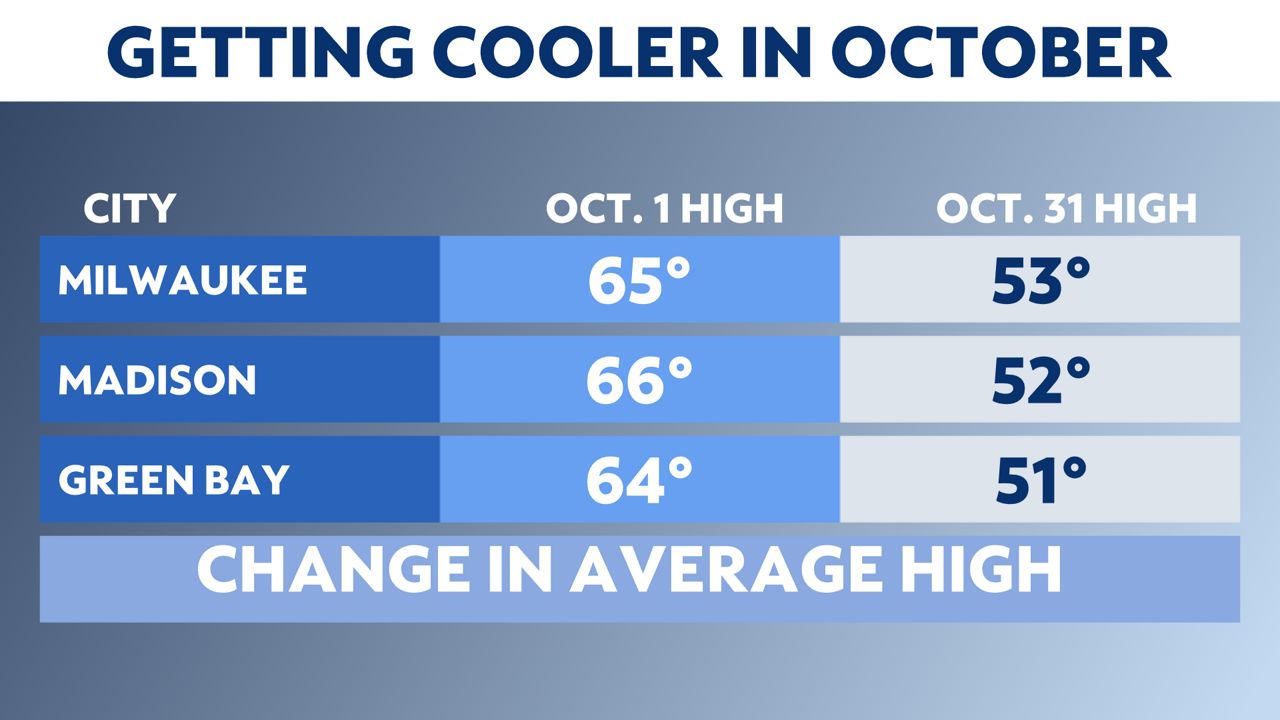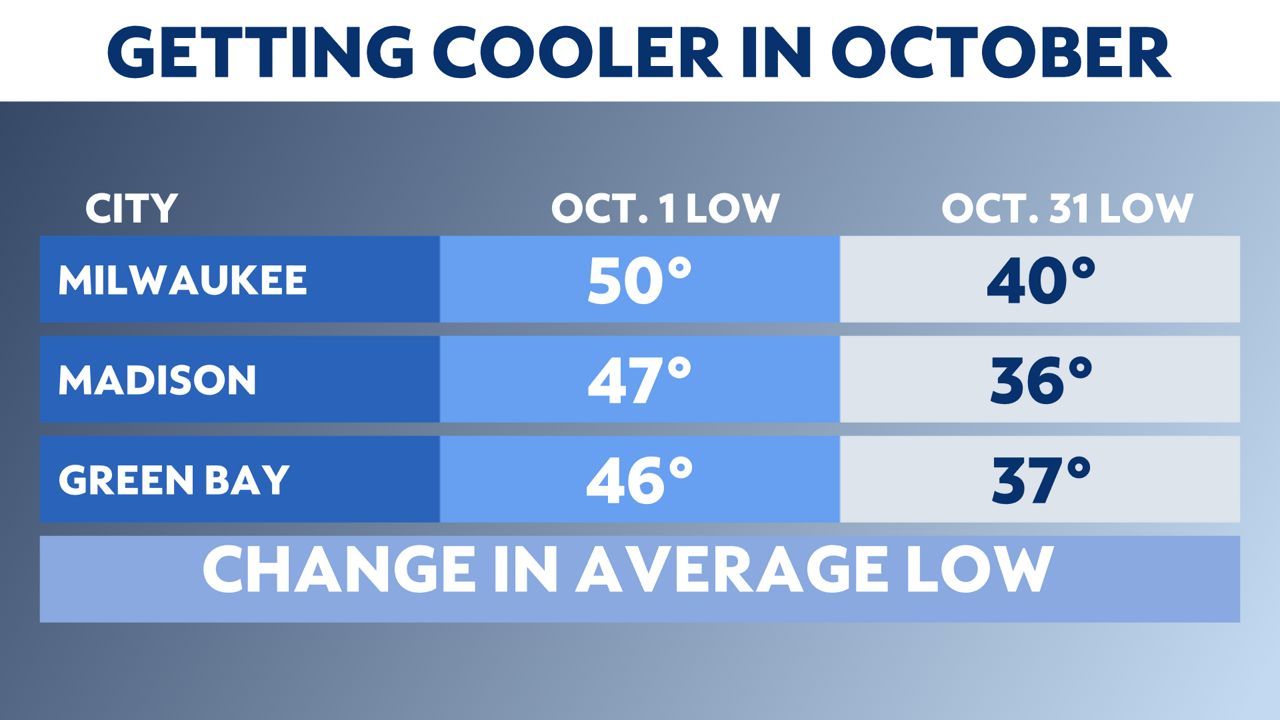The arrival of both fall and October bring plenty of changes to the weather in the Badger State.
Autumn is a season of transition. Days get shorter, the weather gets colder, and wardrobes change from shorts and t-shirts to jeans and sweaters.
October is the first full month of fall when we see noticeable changes in day length across the state.

We start the month with sunrise times in the 6 a.m. hour across most of the state.
By the end of October, the sun will climb above the horizon closer to 7:30 a.m., nearly a 40 minute change from the beginning to the end of the month.

Besides later sunrises, October brings earlier sunsets across the state.
We start the month with sunsets in the 6 p.m. hour across the state.
By Oct. 31, most will see the sunset near 5:45 p.m., nearly 50 minutes earlier than Oct. 1.
Daylight Saving Time does not end this year until Nov. 5, meaning we will lose roughly an hour and a half of true day length in our first full month of fall.

A more obvious change with the changing seasons is lower temperatures.
We start October with average high temperatures in the mid-60s.
By the end of the month, average high temperatures fall to the low-to-mid 50s.
Average high temperatures in parts of far northern Wisconsin will fall to the 40s.

We feel the chill of the changing seasons at night.
With less daylight and lower humidity, average overnight lows plummet throughout October.
Many see average morning lows fall to the 30s. Milwaukee and other areas along Lake Michigan remain slightly milder in the low 40s thanks to the lake.
The Climate Prediction Center forecasts a near average to slightly above average temperature trend ahead for the month of October.
Prepare for fall to bring shorter days, longer nights and falling temperatures.
Our team of meteorologists dives deep into the science of weather and breaks down timely weather data and information. To view more weather and climate stories, check out our weather blogs section.



